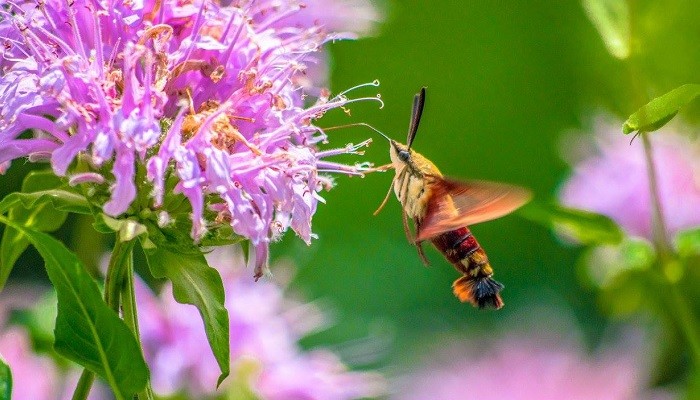It’s a bird! It’s a plane! It’s a… moth? A hummingbird moth to be exact. The North American hummingbird moth moves so fast and looks, sounds and acts so much like a hummingbird that it can be hard to tell the two apart. The hummingbird moth’s resemblance to a hummingbird helps keep it safe from predators that feed off bugs; but if you observe closely, you will see differences as well as similarities.
- Hummingbird moths can grow up to 2.5 inches long, whereas a hummingbird can grow up to 4 inches long. Hummingbird moths are plumper than hummingbirds, and the moth has six legs and an antenna, while a hummingbird has two legs and a beak.
- Hummingbird moths emerge from their chrysalis in spring, just as hummingbirds are migrating to their area. They are active in the spring and summer, like hummingbirds.
- Hummingbird moths feed off flowers by hovering over them in mid-air, then roll out their proboscis (a tubular mouthpart) to reach the nectar. Their proboscis can be nearly twice as long as their body.
- There are four kinds of hummingbird moths in North America. The two most prevalent are the snowberry clearwing and the hummingbird clearwing.
- Most hummingbird moths fly at speeds up to 12 mph. Hummingbird moths move their wings up to 70 times a second, while hummingbirds can move their wings up to 80 times per second.
Want to learn more about moths and other local wildlife? Visit one of the Forest Preserves’ six nature centers to talk to a naturalist.

